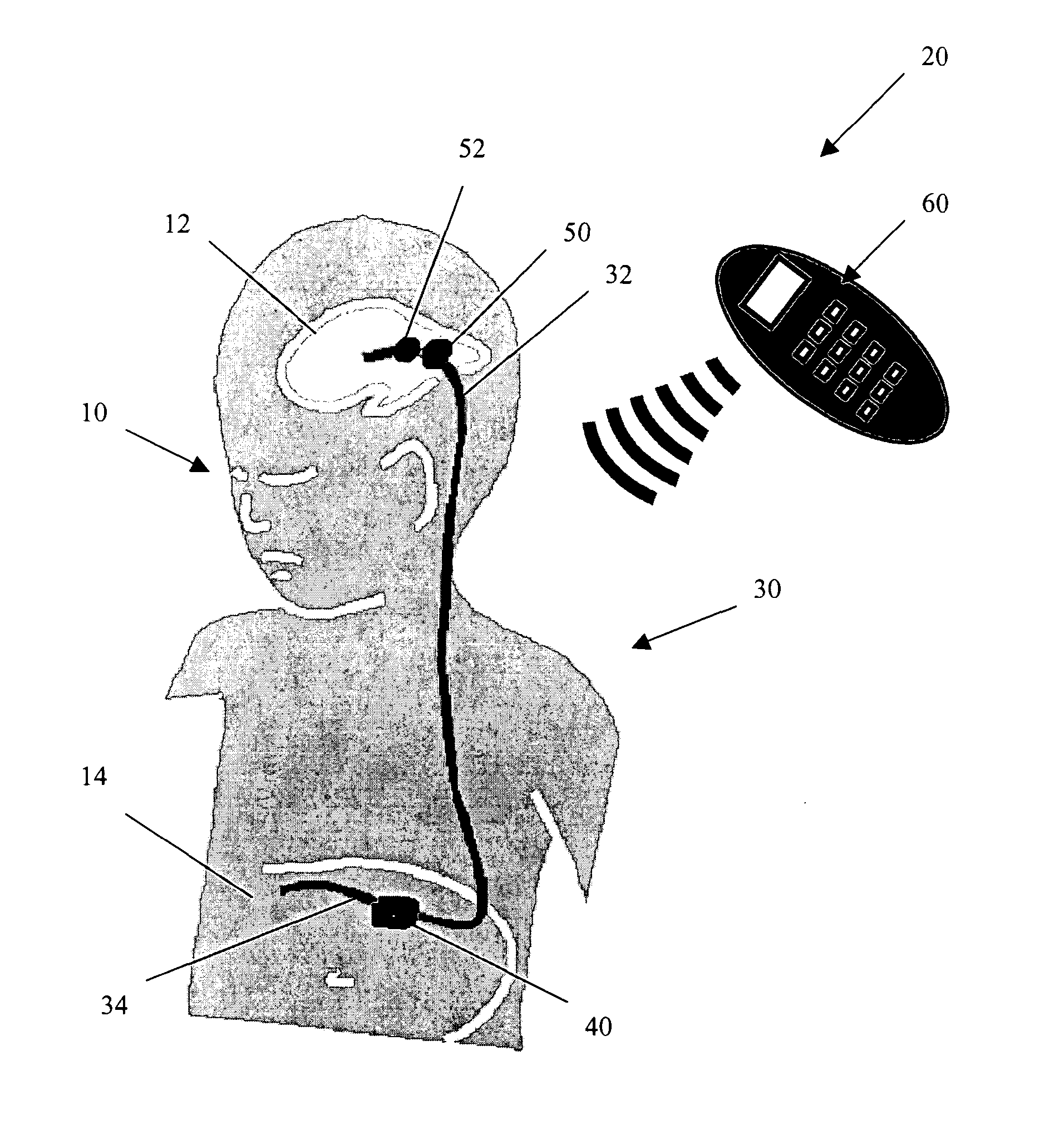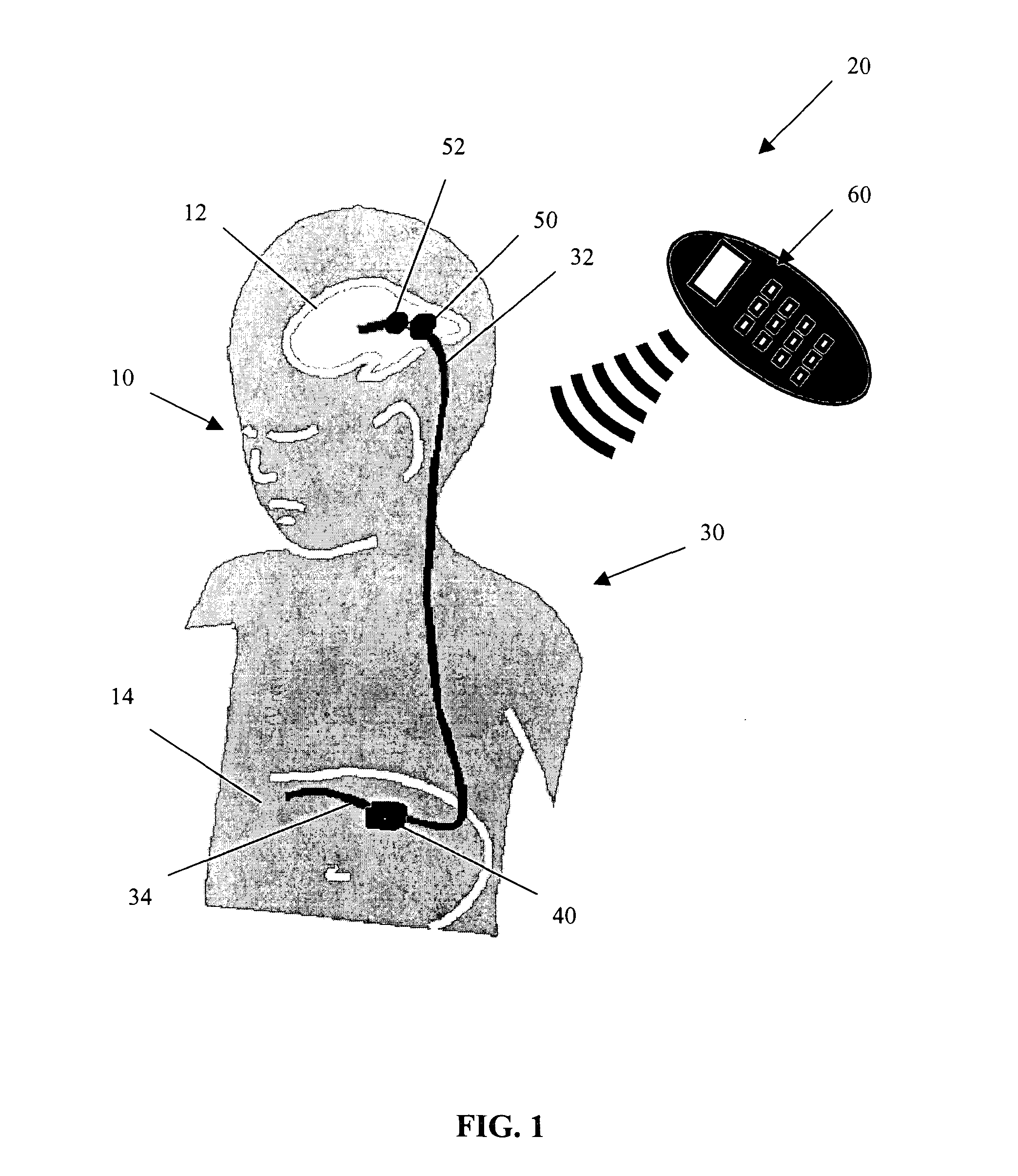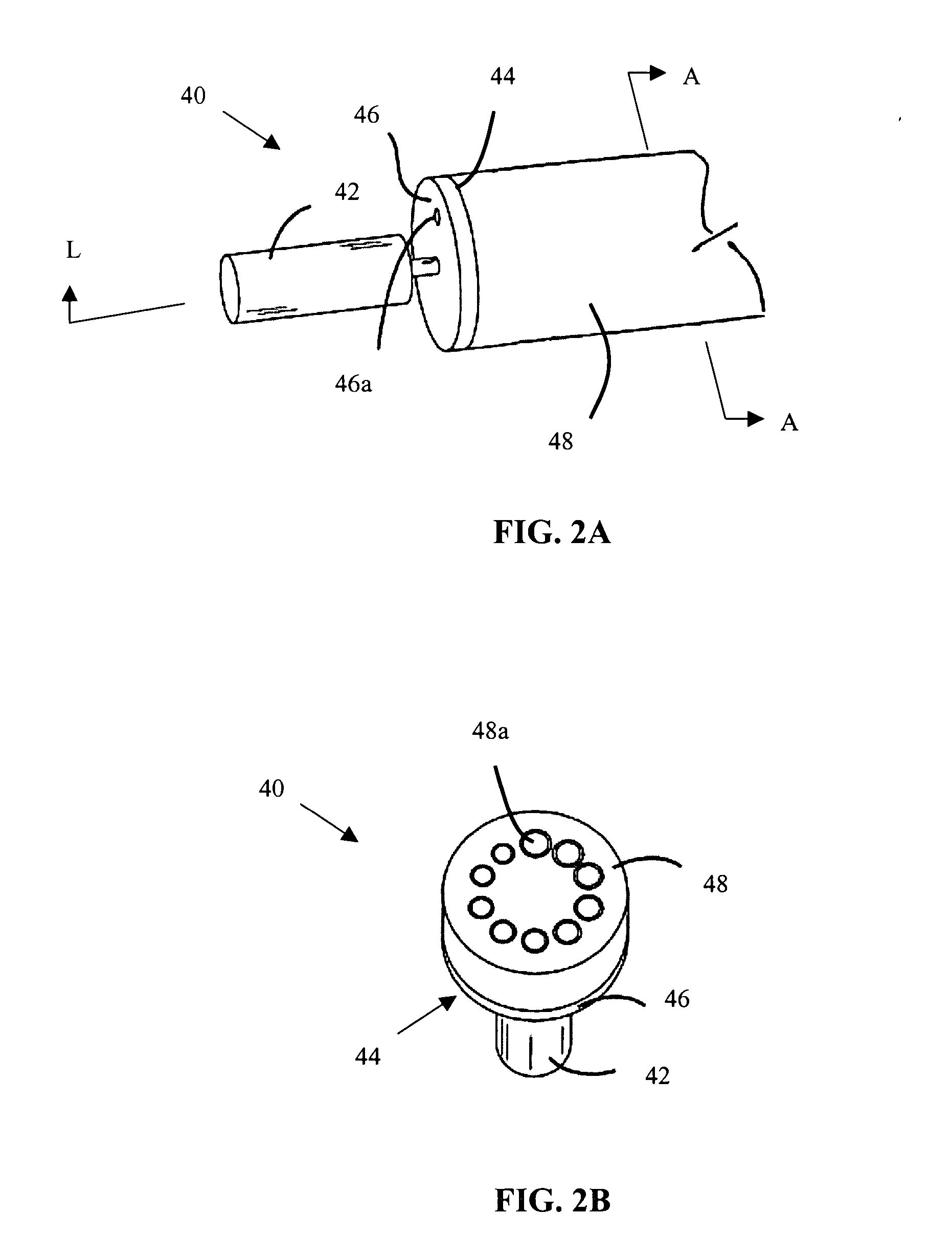Method and apparatus for managing normal pressure hydrocephalus
a hydrocephalus and normal pressure technology, applied in medical science, diagnostics, intracranial pressure measurement, etc., can solve the problems of coma and/or death, increase in intracranial pressure, and failure to keep up with csf absorption rate production rate,
- Summary
- Abstract
- Description
- Claims
- Application Information
AI Technical Summary
Benefits of technology
Problems solved by technology
Method used
Image
Examples
Embodiment Construction
[0024] Described herein is a method and apparatus for regulating CSF flow in a hydrocephalus patient by adjusting the drainage rate of excess CSF in response to variations in the ventricular volume of the patient. The method and apparatus of the present invention regulates the drainage of CSF from the cranial cavity of a hydrocephalus patient. The apparatus includes an adjustable valve and a volume sensor that can be periodically energized by the patient or attending physician to determine when, or if, a change in the ventricular volume has occurred, and whether corrective adjustment of the valve's resistance should be made.
[0025] Turning now to the drawings and particularly to FIG. 1, an exemplary embodiment of an apparatus 20 in accordance with the present invention is illustrated. The apparatus 20 comprises a shunt system 30 shown herein as being implanted within a hydrocephalus patient 10. The implantable shunt system 30 includes a proximal or ventricular catheter 32 installed ...
PUM
 Login to View More
Login to View More Abstract
Description
Claims
Application Information
 Login to View More
Login to View More - R&D
- Intellectual Property
- Life Sciences
- Materials
- Tech Scout
- Unparalleled Data Quality
- Higher Quality Content
- 60% Fewer Hallucinations
Browse by: Latest US Patents, China's latest patents, Technical Efficacy Thesaurus, Application Domain, Technology Topic, Popular Technical Reports.
© 2025 PatSnap. All rights reserved.Legal|Privacy policy|Modern Slavery Act Transparency Statement|Sitemap|About US| Contact US: help@patsnap.com



